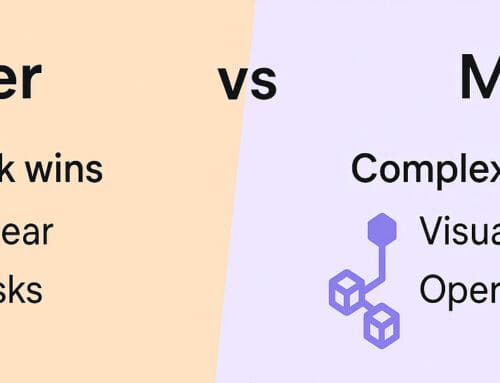Seamlessly Create Salesforce Cases from Gravity Forms Submissions
Introduction to Gravity Forms and Salesforce Integration
In today’s fast-paced business environment, managing customer relationships efficiently is more crucial than ever.
Integrating Gravity Forms with Salesforce can streamline this process, ensuring that every form submission
transforms into a trackable case. But how does this work, and why should you consider it for your business?
Gravity Forms is a popular WordPress plugin used to create contact forms on websites. When integrated with
Salesforce, a leading CRM platform, it bridges the gap between capturing customer information and managing it
effectively within a single system. This integration helps businesses avoid data entry errors, save time, and
improve customer relationship management.
Understanding the Benefits of Automation in CRM Systems
Automating the process of creating Salesforce cases from Gravity Forms submissions offers numerous benefits. It
eliminates the need for manual data entry, reducing the risk of human error and freeing up valuable time for
more important tasks. Moreover, it ensures that all customer interactions are recorded systematically, enhancing
data accuracy and consistency.
Once you automate these processes, you’ll find that your team can focus on more strategic initiatives. This is
because automation allows for real-time updates, ensuring that all team members are on the same page. The result
is a more agile and responsive customer service operation that can swiftly adapt to changing circumstances.
Setting Up Your Gravity Forms for Integration
The first step in integrating Gravity Forms with Salesforce is setting up your forms correctly. Each form needs
fields that correspond to the information required in your Salesforce cases. These might include customer names,
email addresses, phone numbers, and the nature of their inquiry or issue.
Customization is key here. You want your forms to capture all necessary details without overwhelming the user.
Make sure the fields are clearly labeled and relevant to your business operations. Additionally, it’s essential
to test the forms rigorously before going live to ensure they function correctly and collect the data as
intended.
Steps to Integrate Gravity Forms with Salesforce using Make
Integrating these two platforms may sound daunting, but with tools like Make, it becomes a seamless process. Make
offers templates specifically designed to create Salesforce cases from Gravity Forms submissions. To begin, sign
up for a Make account if you haven’t already.
Once you’re set up on Make, use the template provided for the Gravity Forms and Salesforce integration. This
template guides you through connecting your accounts and mapping the fields between your forms and Salesforce
fields. It’s like assembling a puzzle; each piece has its place and, when combined, forms a complete picture of
your customer data workflow.
Configuring Field Mappings for Accurate Data Transfer
Field mapping is an integral part of setting up this integration. It involves linking each form field with its
corresponding field in Salesforce. Whether it’s a simple contact form or a detailed survey, accurate mapping is
crucial for the correct transfer of information.
During this process, pay attention to field types and formats. For example, ensure that date fields in Gravity
Forms match the date format expected by Salesforce. This prevents any hiccups during data transfer and keeps
your records clean and organized.
Testing and Troubleshooting Your Integration
Before rolling out your new integration, thorough testing is necessary. Submit test forms to see if they are
correctly creating cases in Salesforce. Check not only the creation of cases but also the accuracy and
completeness of the information transferred.
If issues arise, troubleshoot by reviewing your field mappings and the configuration steps you’ve taken. It might
be like unraveling a big knot of yarn; patience and attention to detail are essential. Using the debugging tools
provided by Make can help identify where things might be going wrong.
Maintaining and Updating Your Integration Over Time
Like any other technology implementation, keeping your integration up-to-date is vital. As Salesforce or Gravity
Forms release updates, check if these changes require adjustments to your integration setup. Regular maintenance
ensures everything continues running smoothly without unexpected downtime.
Furthermore, as your business processes evolve, you may need to modify your forms and field mappings. Keep an eye
on the performance and look for opportunities to optimize your integration to better serve your business needs.
The Impact of Efficient CRM Processes on Business Performance
Efficient CRM processes have a profound impact on overall business performance. By automating routine tasks like
case creation, your team can focus on delivering exceptional customer service. This not only enhances customer
satisfaction but also boosts your company’s reputation and profitability.
When your CRM systems run smoothly, it’s akin to having a well-oiled machine. Each component works in harmony,
ensuring productivity and fostering innovation. Ultimately, businesses that prioritize efficient CRM processes
position themselves for long-term success in today’s competitive market.
Conclusion
Integrating Gravity Forms with Salesforce is a strategic move for any business looking to enhance its customer
relationship management. The process, while initially complex, pays off significantly by saving time, reducing
errors, and improving service delivery. By following the steps outlined above, you can create a seamless
connection between capturing customer queries and managing them effectively within Salesforce.
Frequently Asked Questions
How does Gravity Forms work with Salesforce?
Gravity Forms works with Salesforce by collecting data from users and automatically sending this information to
create cases in Salesforce, streamlining customer relationship management.
What do I need to integrate Gravity Forms with Salesforce?
You need active accounts in both Gravity Forms and Salesforce, along with a tool like Make to facilitate the
integration and map the data fields accurately.
Can I customize the fields that are sent to Salesforce?
Yes, you can customize which fields from your Gravity Forms are sent to Salesforce by setting up field mappings
correctly during the integration process.
Is it necessary to update the integration regularly?
Regular updates and maintenance are recommended to ensure the integration remains functional, especially when
either platform updates its features or APIs.
What should I do if the data isn’t transferring correctly?
If data isn’t transferring correctly, review your field mappings and integration setup. Use debugging tools to
spot any misconfigurations, and make adjustments as needed.










